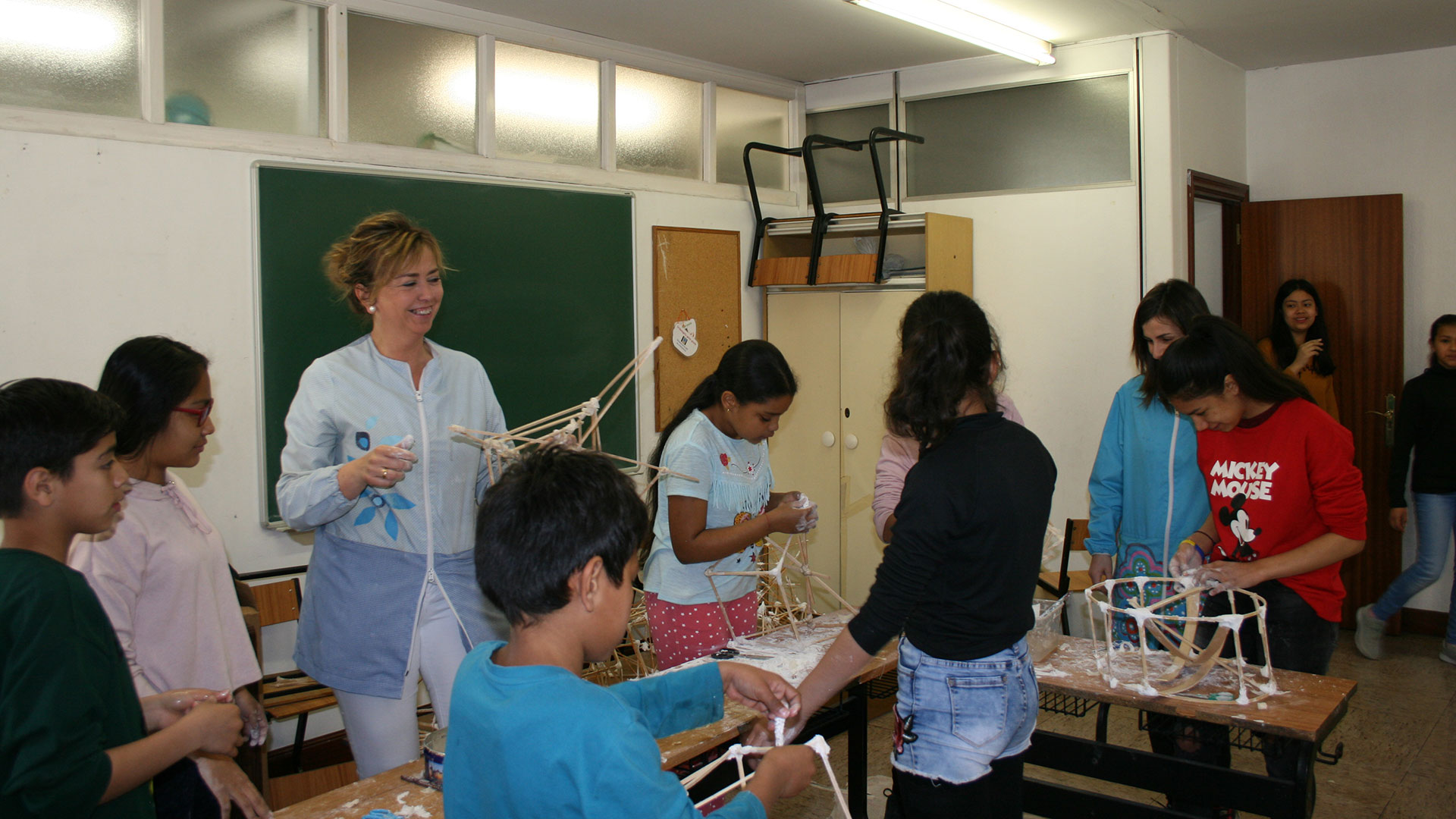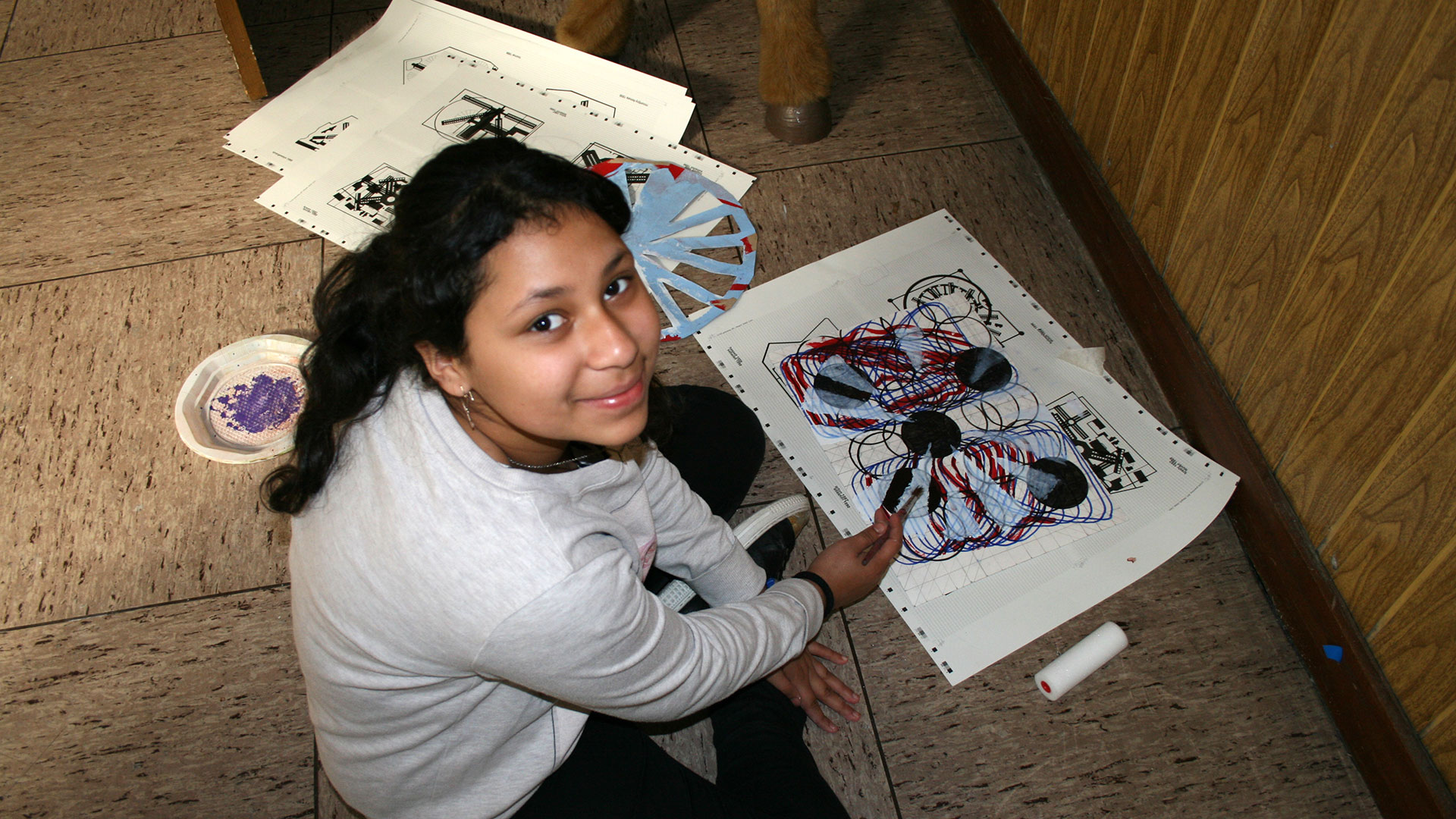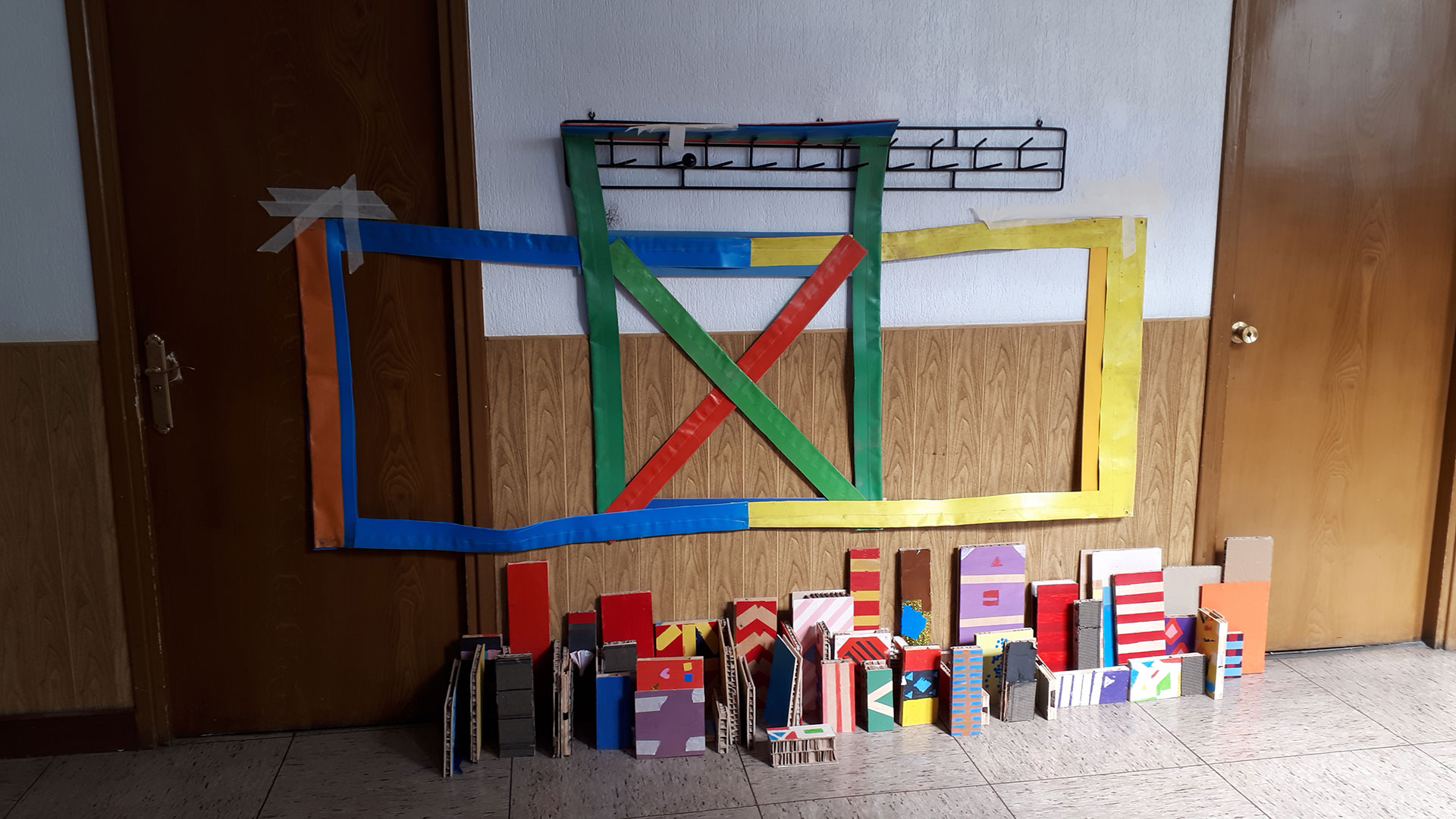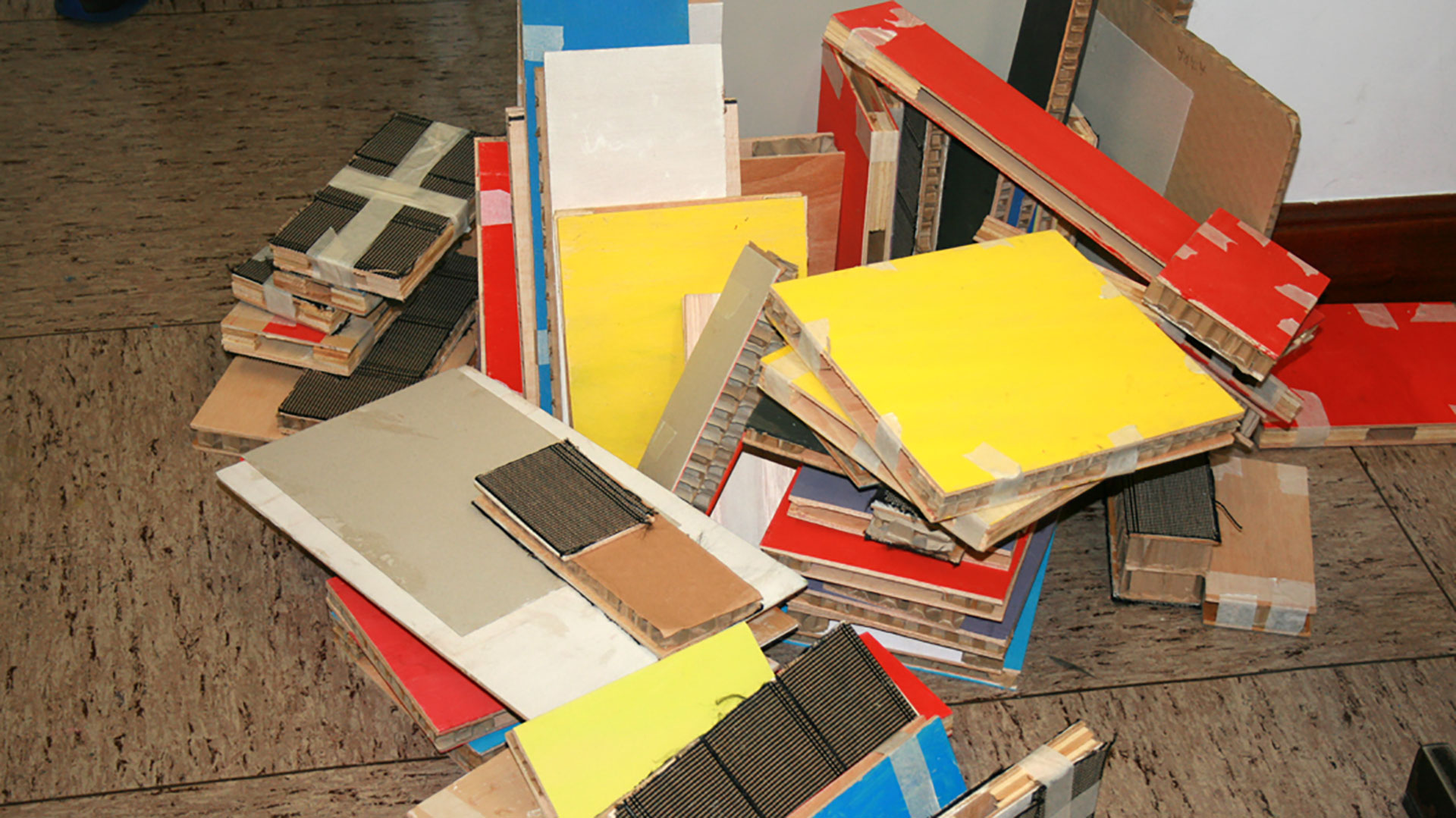Project: Cities and villages
San José de Donostia
22 fifth- and sixth-grade students from San José School, Donostia/San Sebastián
Teachers: Karmele Mitxelena and Lourdes González
Artist: Iñaki Gracenea
Language: Spanish
Comparing the city and the village, their differences and similarities, and the layout and structures of the two, the children explored not only the architecture but also the social aspects, the different organizational systems and the cultures in large towns and small communities.
The concept of house was the starting point of this exercise, since houses exist in both cities and villages. The students first made structures for imaginary houses. Then they were asked to change their point of view and to look at their buildings as if they were inhabitable sculptures. They imagined what an ideal city would be like, an imaginary city that did not exist. Each child created their own architecture model, which were taken together to form the city’s skyline—a view of the urban framework and the tallest buildings. Along the process, the students realized that beyond those outlines there are people, communities, groups that coexist and establish relationships with one another. Architecture often hosts a community where different cultures coexist. The children also realized that sometimes cities mimic nature through organic or geometric shapes, like the fractals that appear once and again and are copied in models and patterns.
#ChangingTheSpace #InhabitableSculpture #Skyline #NatureAndCity
“We had an enriching experience at many levels, and the children took an active part in the learning process.”—Karmele Mitxelena and Lourdes González





